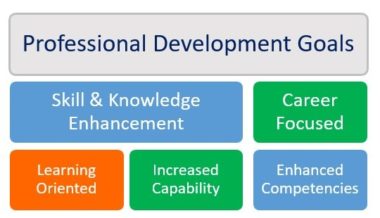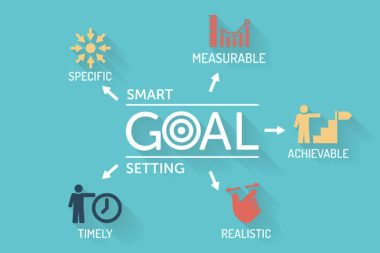If you’re struggling to motivate yourself and you feel as though you’re stuck in a career rut, then it’s time for you to take action.
Some of the most inspirational figures of this generation swear by planning for a brighter future. They don’t necessarily believe in luck. Instead, they work on their skills, plans, and goals to propel them to where they want to be.
And if they can do it, so can you.
Developing a long-term strategy will serve as a guide to your decisions throughout your career.
What Is a Professional Development Plan?
A Professional Development Plan (PDP) is used to document goals and set out a strategy on how to achieve them through self-management. This is usually a long-term strategy, but short-term goals can also be useful for people who want to reach certain milestones.
Creating the perfect personal development strategy takes careful planning. A good PDP should be truly reflective of the person creating it. After all, your career trajectory is up to you! However, some steps could assist you in devising the kind of comprehensive strategy you need.
So, plan your way to a fulfilling career by designing your professional development strategy.
Key Steps in Planning a Professional Development Strategy
Assess Where You Are Now
Evaluating your professional interests, knowledge, and skills is a great place to begin planning your professional development strategy. If you know you’re great at sales enablement but find yourself falling behind in other areas, this will force you to address those gaps in your knowledge.
When you examine your current position in relation to your career goals, it can help you gain perspective of where you see yourself.
Think about how your career is currently progressing. Answering the following questions may provide some clarity on your career situation:
- What have you achieved in the past five years?
- Are you where you wanted to be at this stage of your career?
- What is it about your current position that you are not content with?
If you feel negative about the answers to the first two questions, then let’s turn that around by contemplating the last one. What exactly would you like to change? It could be the company you’re working for, the role within your company, or the industry you’re in.
Perhaps you feel like you’d benefit from further education to fulfill your goals, and that’s something that’s not an option in your current role. It’s never too late to pick up new skills. Don’t wonder how to fax from a computer or how to use special software—learn it.
Understanding the source of your desire for change will be useful when you reach the next step—setting goals.
Infobase has 80,000+ microlearning videos and hundreds of professionally developed courses designed to help you master new skills, practice concepts, share ideas, and assess learning. Learn more here.
Set SMART Goals
Defining your short-term and long-term goals is one of the most crucial steps you need to take when planning a comprehensive strategy. Though it can be intimidating at first to plan this far ahead, it’s important to have ultimate objectives that you can work toward.
The goals should be SMART—(S)pecific, (M)easurable, (A)chievable, (R)ealistic, and set out within a (T)ime Frame.
SMART goals have proved popular because of the way they can change your mindset going forward.
Setting out your goals in this way will make them trackable, and also give you something to refer back to when you require guidance. That, in turn, makes you more accountable. For example, a typical goal for an entrepreneur growing their call center service might be something like, “Aim to improve customer interactions.” It’s a great goal to have. But it doesn’t show exactly how this is going to be achieved.
Imagine that this is one of your goals. This is how it looks as a SMART goal:
- Specific: How can you improve interactions? Do you want to shorten call handle time?
- Measurable: How will you track call handle time across the center?
- Achievable: Make sure the degree to which you want to decrease time is achievable.
- Realistic: Do you have the required resources to up the phone support you provide? Do you need to boost customer experience in other areas to make this happen?
- Time Frame: Set a time frame to look back on; is this continuous or do you have a number you’d like to achieve by the end of the year?
It’s easy to see why SMART goals are the preferred method of setting out plans. They force you to focus on the specifics.
Once you’ve outlined your goals, you’ll have realistic objectives to work toward.
Enlist a Mentor
It may be something you’ve not considered because, for many, it doesn’t seem like an essential part of career progression. But, in fact, 75% of executives believe a mentor has been a vital component of their success.
A good mentor is someone whose career journey you’ve admired, whether it be for their successes or for how they’ve bounced back from any failures. But finding the perfect mentor within your chosen industry can be challenging. Their feedback needs to be constructive rather than critical, and they need to be able to put aside some time from their busy schedule to help you. Finding someone who’s retired or semi-retired can be beneficial. They’re likely to be able to dedicate more time to you.
You could even think globally and video call your mentor for advice virtually. They don’t need to be close by! How does virtual phone service work? It gives you the ability to get in touch with them, whenever, wherever you are.
Failing this, there may be mentorship programs available for your specific industry. Some organizations offer this in order to prepare the next generation for success! Ask your employer if there are opportunities like this within your sector. You may also wish to look into how to build an email list and send out an email to any potential mentors.
Enlisting the help of a mentor can give a sense of stability and reassurance. It may also boost your confidence, knowing you have a guide who can offer you unbiased advice when you need it. This should be a safe space, free of judgment, designed to explore your weaknesses and practice new skills without criticism.
Develop a Timeline
Every professional development strategy needs a timeline. Knowing that you have a “deadline” should motivate you to achieve your plans. However, you need to make sure this deadline is achievable to avoid unwanted pressure for an unattainable objective.
Ensure your goals are consistent with your overall timeline. Let’s say you want your business to use artificial intelligence for customer experience in the long-term, but you’ve not developed an AI team that can work on this right now. If your long-term timeline spans 10 years but your goals are only set for the next five, you’re not planning effectively.
Sometimes, it can be useful to plan goals in yearly chunks. You can then schedule objectives around the opportunities you receive.
Keep a Record
It’s always a good idea to refer back to your goals. However, if your strategy is no longer suiting your needs, don’t be afraid to adapt it.
Keep a record, either monthly or quarterly, of what you’ve achieved so far. Much like journaling in your personal life, it can be useful to have all your thoughts written down.
This will help you remember your overall goal, and remind you of the steps you have laid out for yourself. For example, if you have a goal to improve customer retention, keep note of how you’ve been doing this, and ways you could work on it further.
A professional development strategy isn’t something that should be collecting dust when things seem to be going in the right direction. It’s a long-term career tool that should be updated, staying relevant to your plans.
This can also be useful if you want to apply for a new role. Documenting real-life examples can be just as valuable as a resume. If you’re skilled in ecommerce website maintenance and you have an example of a website you’ve created and developed, this adds to the detailed list of your professional achievements and skills. It’ll also show that you’re ambitious, which is something that is very appealing to employers.
Turning Ideas into a Strategy
Now that you’ve got a plan together, it’s time to turn it into a comprehensive professional development strategy to stay on track.
Think of the strategy like a business plan, but the brand is you! Each element of the strategy should aim to help you reach that dream job or propel your company to greatness.
Work with your mentor to evaluate your goals through cloud collaboration, and establish which are the most important at this time. Then, develop a timeline of how you’re going to achieve them.
Keep this strategy handy, and refer back to it whenever you need guidance or a reminder of why you’re on this journey. It can be tough to stay motivated when challenges come your way. But remember why you developed a strategy in the first place. You saw what you wanted your future to look like, and you set out a plan to achieve it.
See also:
- Infobase Professional Development and Training Solutions
- Trending Professional Development Topics in Our New Reality
- Trending Professional Development Topics in Our New Reality for Public Libraries
- Tips on Creating a Professional Development Plan
- Solution Showcase: Personalize Your Professional Learning
- 5 Skills That Will Be in Demand in a Post-Pandemic World






